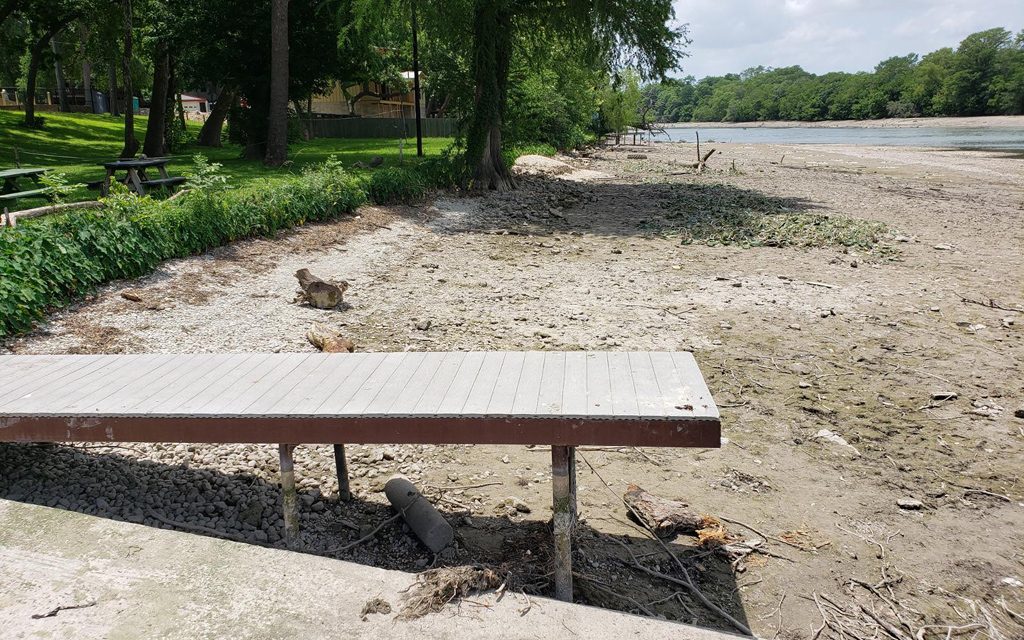by John Jefferson
What Is destroying Texas dams?
Three have erupted recently – or been sidelined before collapse. Two lakes have been drained since May. There’s still water in all three, but you can’t call what’s left a lake. The former river channels are all that remain.
Which ones are they? Lake Wood Reservoir near Gonzales suffered a gate collapse three years ago. Impounded in 1928 a few miles west of Gonzales it fed into the Guadalupe River and is managed by the Guadalupe-Blanco River Authority (GBRA). The dam was not repaired, and the lake is said to still be empty.
Downstream from New Braunfels on the Guadalupe River, a dam forming Lake Dunlap suffered a collapsed gate on May 14, this year. The lake, well-known to bass fishermen, having produced at least one 13-pound ShareLunker recently, supplies water to the fast-growing community of Kyle. The lake quickly drained. All that remains is the original river channel, about 40-feet of mud away from the boat ramp under I-35.
The GBRA manages six dams on the Guadalupe; two have failed, and the other four are about the same age – roughly 91 years old. AGE is the culprit. Dams apparently don’t last forever. And the Guadalupe has had a history of ravaging floods that relentlessly pounded them. If the McQueeny Dam, northwest of Seguin, were to fail, a tidal wave of water would likely crash down the Guadalupe River Valley like Texas has never before seen.
At this writing, the threat of such a calamity weighs heavily on the decision makers. One solution being considered is to drain the other four lakes – McQueeny, Meadow, Placid and Gonzales – to make repairs. It will take about three days to drain each one, and the draining will hopefully be staggered. Public protest has been loud. Tourism could fall. Homeowners are fearful property values will decline.
And even if all four lakes are drained, where will the money come from to repair or replace the four dams. Cost estimates have ranged from $180 million to as high as $200 million!
Don’t worry about Canyon Dam, also on the Guadalupe. That dam was impounded in 1964 and is just a young’un by comparison.
But dam problems aren’t confined to the Guadalupe. My recent fishing trip to Sabine Lake cancelled due to high water that prevented tidal action. Where did that much water come from?
From Dam B. In case that’s unfamiliar, it forms Steinhagen Lake (aka Town Bluff Reservoir) between Jasper and Woodville. The Corps of Engineers manages the lake, which was also impounded about the same time as the Guadalupe lakes. And it needed repairs, too. The lake was lowered about 20-feet, sending all that water downstream into Sabine Lake at Port Arthur.
Repairs are about completed, but the lake is expected to remain closed through Labor Day. It should open in time for alligator (Sept. 10) and teal seasons (Sept. 14).
On the Guadalupe lakes, though, I may not do any fishing below the 90-year-old dams.
JJ





